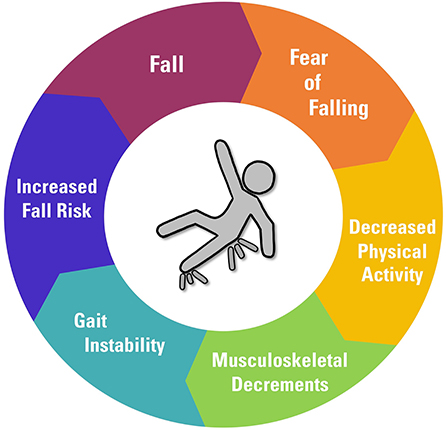Dementia Fall Risk - Truths
Dementia Fall Risk - Truths
Blog Article
Some Ideas on Dementia Fall Risk You Should Know
Table of ContentsSome Known Details About Dementia Fall Risk More About Dementia Fall RiskThe smart Trick of Dementia Fall Risk That Nobody is DiscussingHow Dementia Fall Risk can Save You Time, Stress, and Money.
A fall threat evaluation checks to see just how most likely it is that you will drop. It is primarily provided for older adults. The evaluation normally includes: This consists of a series of concerns about your total health and if you have actually had previous drops or troubles with balance, standing, and/or strolling. These devices evaluate your toughness, balance, and gait (the means you stroll).Interventions are referrals that may minimize your threat of dropping. STEADI includes 3 actions: you for your threat of dropping for your danger elements that can be improved to try to avoid falls (for instance, equilibrium issues, damaged vision) to minimize your risk of falling by making use of efficient approaches (for example, giving education and sources), you may be asked a number of inquiries consisting of: Have you fallen in the previous year? Are you fretted concerning falling?
You'll sit down once again. Your supplier will certainly inspect for how long it takes you to do this. If it takes you 12 secs or even more, it may mean you are at higher danger for a loss. This test checks stamina and balance. You'll being in a chair with your arms crossed over your upper body.
The positions will certainly get more challenging as you go. Stand with your feet side-by-side. Relocate one foot halfway onward, so the instep is touching the big toe of your other foot. Relocate one foot fully in front of the various other, so the toes are touching the heel of your various other foot.
Not known Facts About Dementia Fall Risk
The majority of falls occur as a result of numerous adding elements; as a result, managing the risk of falling begins with identifying the variables that contribute to fall risk - Dementia Fall Risk. A few of the most appropriate threat variables include: History of prior fallsChronic clinical conditionsAcute illnessImpaired stride and equilibrium, lower extremity weaknessCognitive impairmentChanges in visionCertain high-risk medications and polypharmacyEnvironmental variables can also increase the risk for drops, consisting of: Insufficient lightingUneven or damaged flooringWet or slippery floorsMissing or damaged handrails and get barsDamaged or poorly equipped devices, such as beds, wheelchairs, or walkersImproper usage of assistive devicesInadequate guidance of the individuals living in the NF, including those who show hostile behaviorsA successful fall risk management program requires an extensive professional analysis, with input from all members of the interdisciplinary group

The treatment plan must also include treatments that are system-based, such as those that promote a safe atmosphere (ideal illumination, hand rails, get hold of bars, and so on). The performance of the interventions need to be examined periodically, and the care strategy changed as required to mirror modifications in the loss danger analysis. Carrying out an autumn threat administration system making use of evidence-based finest method can lower the prevalence of falls in the NF, while limiting the capacity for fall-related injuries.
The Only Guide for Dementia Fall Risk
The AGS/BGS guideline advises evaluating all grownups matured 65 years and older for fall danger yearly. This testing contains asking patients whether they have fallen 2 or more times in the previous year or looked for clinical interest for an autumn, or, if they have actually not dropped, whether they really feel unstable when strolling.
People who have dropped as soon as without injury ought to have their equilibrium and stride reviewed; those with stride or equilibrium abnormalities should get added assessment. A background of 1 fall without injury and without stride or balance issues does not necessitate further assessment past continued annual loss threat testing. Dementia Fall Risk. A loss threat analysis is required as component of the Welcome to Medicare exam

An Unbiased View of Dementia Fall Risk
Documenting a drops history is one of the top quality indications for autumn prevention and administration. An essential part of risk assessment is a medicine review. Numerous classes of drugs raise fall threat (Table 2). Psychoactive medications in particular are independent predictors of drops. These medications tend to be sedating, change the sensorium, and hinder this link balance and stride.
Postural hypotension can often be reduced by minimizing the dosage of blood pressurelowering drugs and/or quiting medicines that have orthostatic hypotension as an adverse effects. Usage of above-the-knee assistance hose and resting with the head of the bed elevated might likewise decrease postural reductions in blood stress. The preferred components of a fall-focused physical exam are revealed in Box 1.

A TUG time greater than or equal to 12 secs suggests high loss risk. Being incapable to stand up from a chair of knee height without making use of one's arms suggests increased loss threat.
Report this page